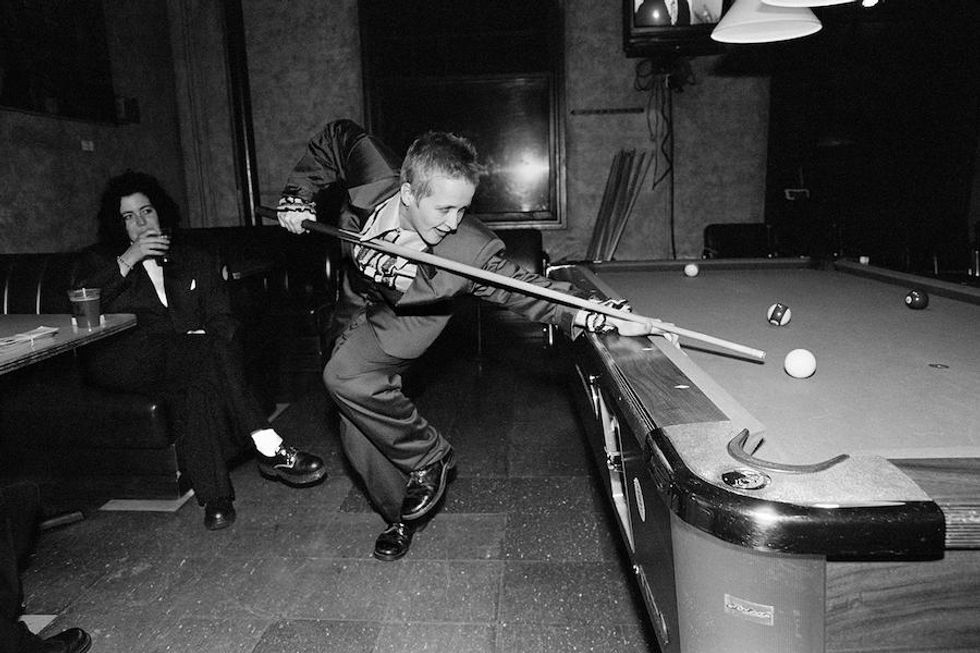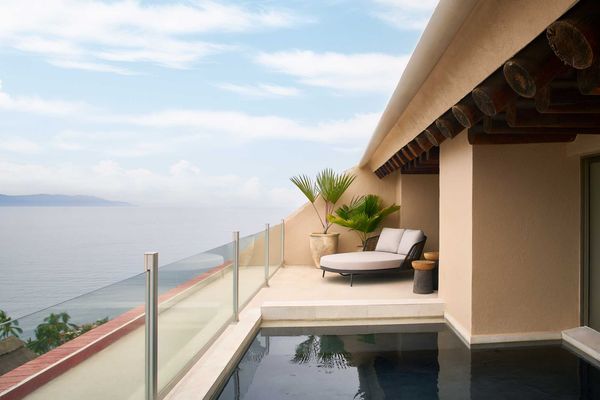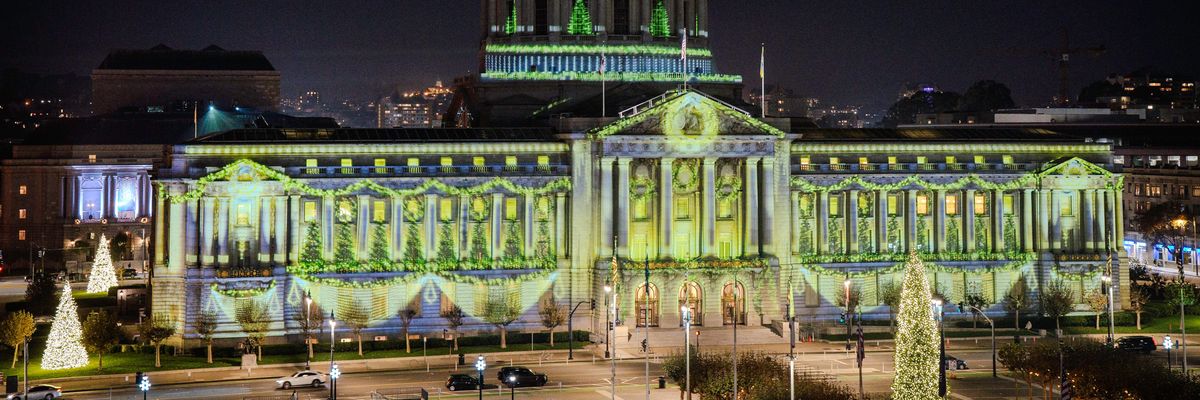On their first date more than 14 years ago, Brandon Romer and Steffan Schlarb talked about a lot of things—Jerri Blank, pugs, and indie music. They also talked about their love of art and their shared dream of owning a gallery.
Over the next two decades they moved in together, got married, bought a house, started a company, switched jobs, dealt with life’s ups and downs. But there was one constant: their love of art, and more specifically outsider and marginalized artists. They filled their home with an eclectic mix of paintings and photographs and sculptures.
Then in 2020, after a personal health scare and a global pandemic, they decided not to wait any longer and to make their art dream a reality. Last fall, they opened the doors of Schlomer Haus, a Market Street gallery on the edge of the Castro.
“We could have opened the gallery in another neighborhood with an established art scene,” explains co-founder Steffan Schlarb. “But we wanted to create a space in the Castro for the unseen to be seen, and where we can help foster artistic creativity and culture in the Castro.”
Over the past nine months, they have exhibited an incredibly wide range of work of queer, underrepresented, and emerging artists—the kind of art that fills their own walls in their home.
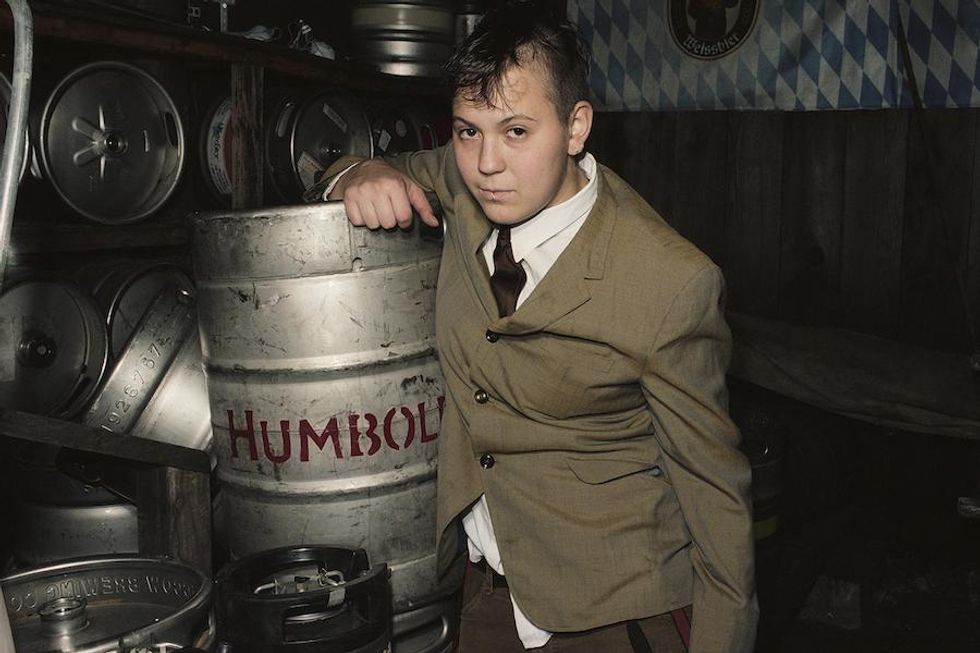
“Outsiders are forced to look at the world a different way, from a different vantage point,” explains Schlarb. “It’s about revealing something, another layer.”
It’s no surprise they were drawn to the work of Chloe Sherman, or to her instagram feed at first.
“We do a lot of research on Instagram and we came across Chloe’s work and knew we wanted to show it,” explains Romer.
Chloe Sherman arrived in San Francisco in 1991. She had a deep interest in photography, and stacks of negatives, but no formal training. What she found here changed her life.
“I came to San Francisco and fell in love with the city. It wasn’t just gorgeous, it was affordable,” explains Sherman. “So you could show up—as an artist or wayward youth, or outcast or free-spirited traveler, or a queer kid who had been kicked out—and get a room in a flat for like 250 bucks. It didn't take much to make your rent. So you could work a little bit, hang out with people, live well, and be very creative and make things together. There was a sense of ‘come as you are and let’s celebrate that.’”
For Sherman, the Mission became the center of her queer life. “This was for the most part where people in the queer '90s scene lived.” There was the lesbian Lexington Bar, Leather Tongue Video, Dog Eared Books, the Bearded Lady Cafe, and Black and Blue Tattoo. “There was this pulse of community, of people forming their own way of life,” she remembers. “I found an amazing group of like-minded people that I really connected with and that was the most photogenic.”
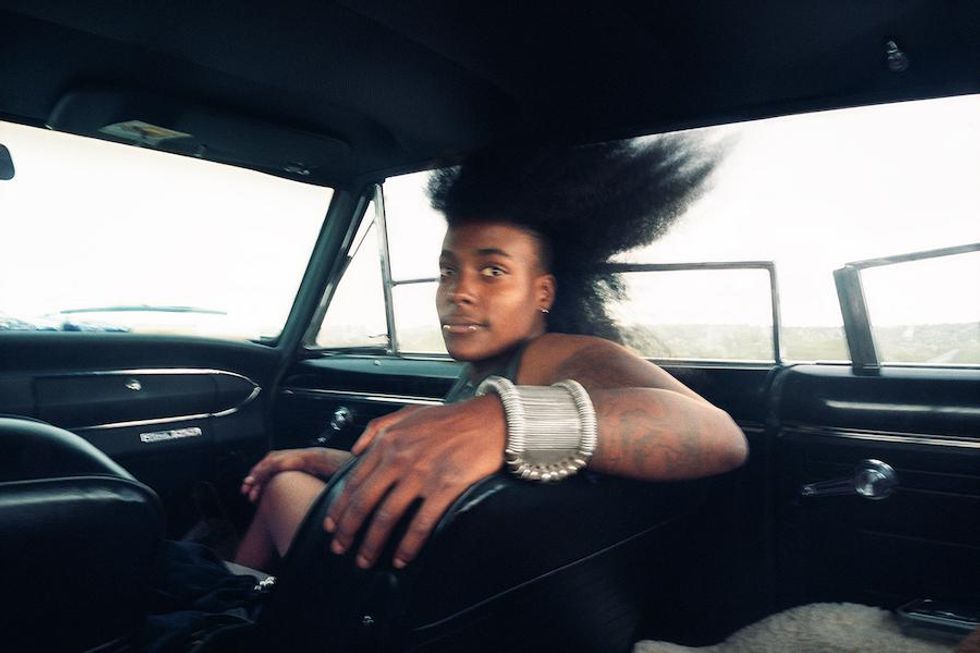
Soon after arriving, she was accepted to the SF Art Institute for fine art photography, and her career and her community became uniquely intertwined.
“I saw just beauty and joy and tenderness and resilience in this group that wasn’t welcomed or embraced by mainstream society. Yet, here we thrived,” she explains. “As a fine art photographer veering into documentary photography, I wanted to capture and show a very beautiful side of what many people thought to be kind of a gritty, off-beat community.”
The result: an incredibly vast body of work focused on a small slice of community at a very specific time and place that has a clear throughline and a sense of purpose.
“I feel that I always intended to show a wider public an inside view, to kind of expose the beauty of a group that I thought was spectacular,” notes Sherman. “The images that ended up being my favorites—and that are in the show—are beautiful pictures. Color, light, and the esoteric feeling or the mood was always just as important to me. I edited from a fine art perspective of Is this a beautiful photograph? Does it capture an intimate moment that is universal?”
Sherman hasn’t exhibited these photographs anywhere in more than 20 years, and now she sees them as more than just beautiful images of a subculture: They are history.
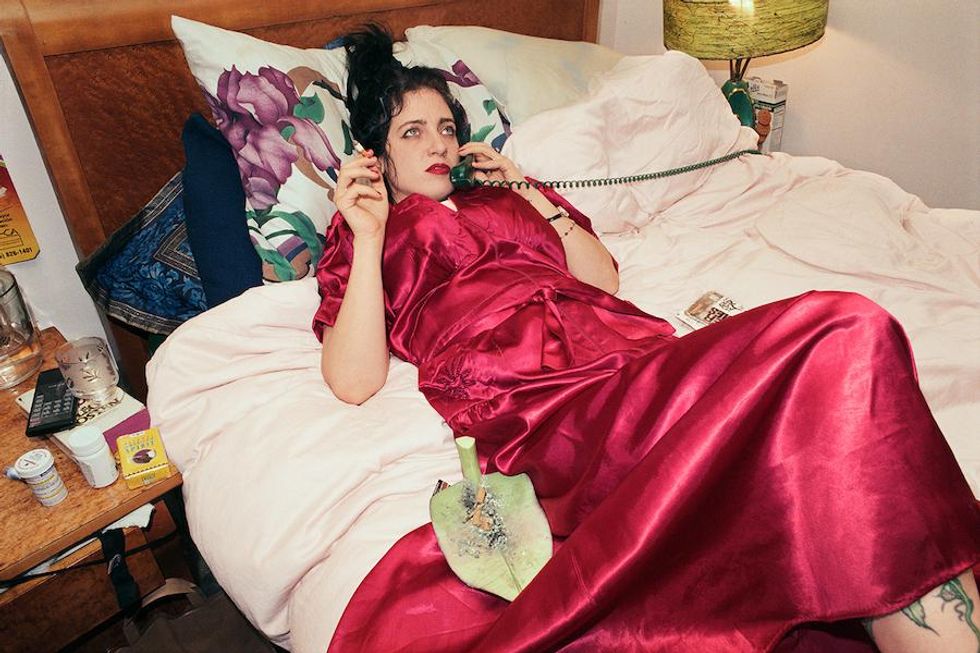
“I think we always knew it was a special place and time, but looking back, it was only the beginning of the tip of the iceberg of it being easy to come out or be, you know, queer, whatever that meant to you,” she explains.
This was before gay marriage, gays in the military, LGBTQIA representation in Hollywood and politics. It was before Mayor Pete, Laverne Cox, and Lil Nas X.
“There was probably a need for communal support in a much bigger way than there is now. So looking back through all of these photos has just reiterated what a phenomenally pivotal, groundbreaking time it was.”
She has named the show Renegade San Francisco: The 1990s.
“It reflects the attitudes and the actions of the people in the photos and community that was forging their own path off the beaten path of mainstream expectations in society.”
While the exhibit has been decades in the making, Sherman has been focusing on it practically around the clock since Romer and Schlarb from Schlomer Haus found her on Instagram in January.
“They reached out and said, 'would you consider a solo show?' The week before that, I made a decision to just start saying yes when people asked me if they could buy or if they could post or if they could print or publish a photo,” explains Sherman. “There’s more and more interest in this unique time and scene that I was lucky to have had the opportunity to document, and I'm embracing this whole body of work in a new way.”
So, she said yes and suggested they mount the show during Pride Month and make it big. Her hope for people who visit the gallery?
“First and foremost: Just enjoy the photography. But it’s also a chance to experience and witness a moment in gay history. Just like looking at the old black and whites of Harvey Milk, hopefully, it makes you kind of feel like you're there for a moment.”
“Working with Chloe has been amazing,” says Schlarb. “This is exactly why Brandon and I wanted to open a gallery. You know, to provide a forum for overlooked and underrepresented artists and to bring more art and culture to our neighborhood.” —David Boyer
Meet Chloe Sherman at the opening reception, 5pm to 9pm Friday, June 17th, with '90s music by DJ Campbell and wines curated by Bottle Bacchanal.
// Renegade San Francisco: The 1990s is on view June 17 through July 23 at Schlomer Haus Gallery, 2128 Market St. (Castro), noon to 6pm Tuesday through Saturday and by appointment; schlomerhaus.com
